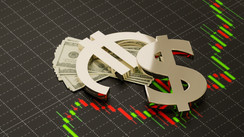Japanese Yen's Friday Exhibition
On Friday, there has been a subtle shift in the Japanese yen's performance. During the European trading session, the USD/JPY exchange rate was seen trading at 147.80, a rise of 0.10%.
Stumble in Tokyo Core CPI
A significant shift was noticed today when Tokyo's Core CPI plummeted to a yearly rate of 1.6% in January, down from December's 2.1% reading. Not since May 2022 has this key indicator descended beneath the BOJ's target of 2%. The leading cause of this decline was a shrink in energy prices. The Tokyo Core CPI, excluding fresh food but incorporating fuel, experienced this dip. Conversely, the core-core index of Tokyo, which is exclusive of fresh food and fuel, observed a rise of 3.1% in January, a decrease from December's 3.5%.
BoJ's Perspective on Inflation Shift
The BoJ interprets this decline in inflation as a sign of gradual cost pressure replacement by increasing service prices, the new primary driver of inflation. This is a critical indication, as it suggests inflation is becoming more sustainable, which is a prerequisite for the BoJ to tighten its super-easy policy. December's corporate service inflation, which remained at a lofty nine-year high of 2.4%, echoes these service price increases. This vigilance reveals how firms continue to transfer their costs in the face of high service prices.
Speculations over Future BoJ Policy Shift
BoJ Governor Ueda declared in this week's policy meeting that there is ongoing progress towards the 2% sustainable inflation goal. This has stirred market chatter over a potential major policy modification by the BoJ possibly in April or June. The BoJ is keen to see a surge in wages as proof of sustainable inflation, with the national wage negotiations in March expected to culminate in wage boosts.
Decoding US First-Estimate GDP for Q4
Despite the US first-estimate GDP for Q4 exceeding expectations, it failed to spark a significant reaction from the US dollar. Although the GDP's growth saw an increase of 3.3% year-on-year, it was less than Q3's high of 4.9%, but significantly more than the consensus forecast of 2.0%. As the US economy continues to churn out stronger than expected results, anticipation of a rate cut in March by the markets has dwindled. The odds of a March rate cut now sit at 48%, a steep fall from the previous month's 70%, according to data from the CME's FedWatch tool.





